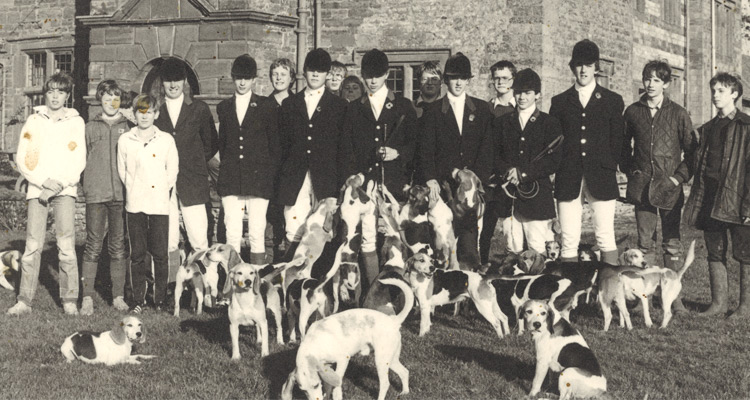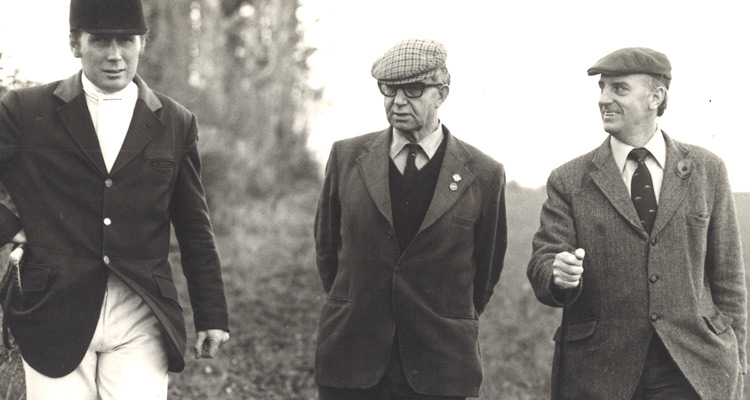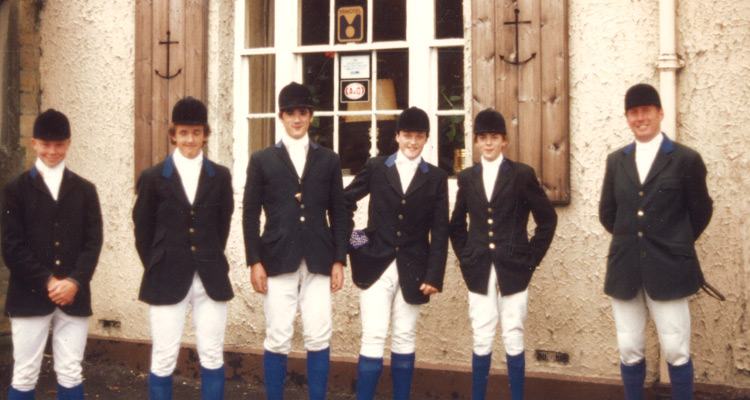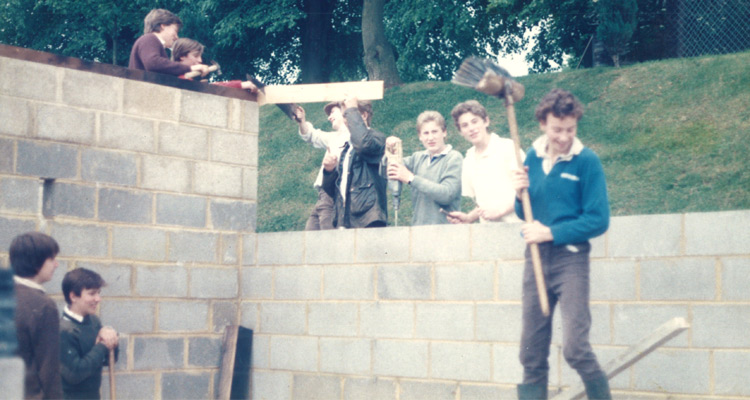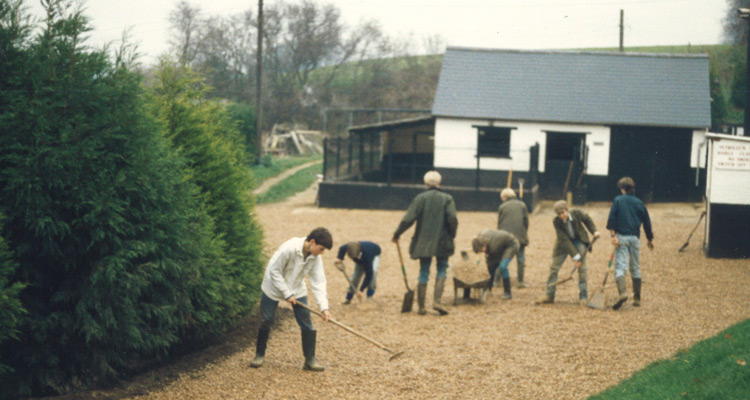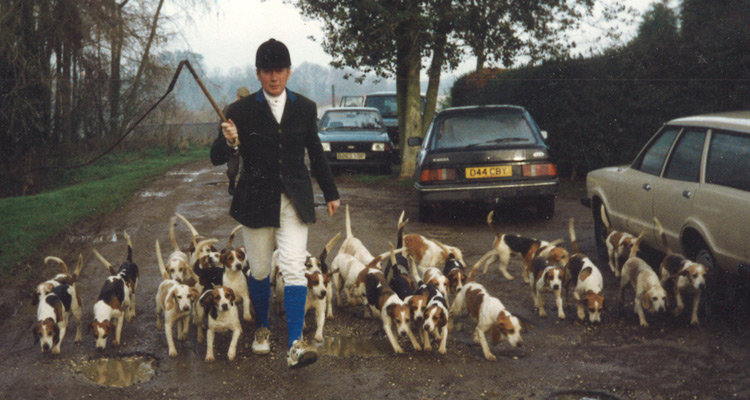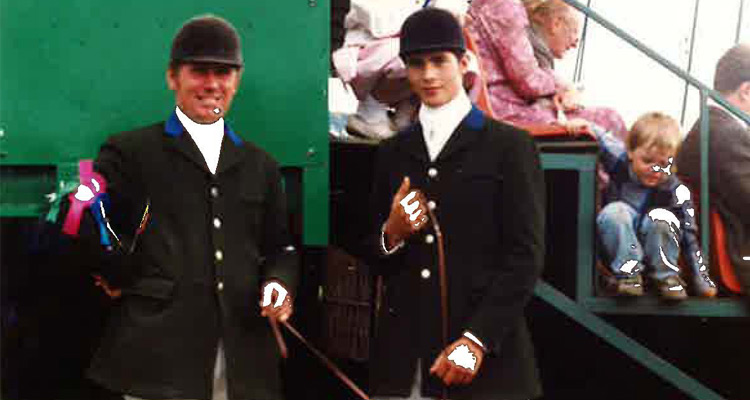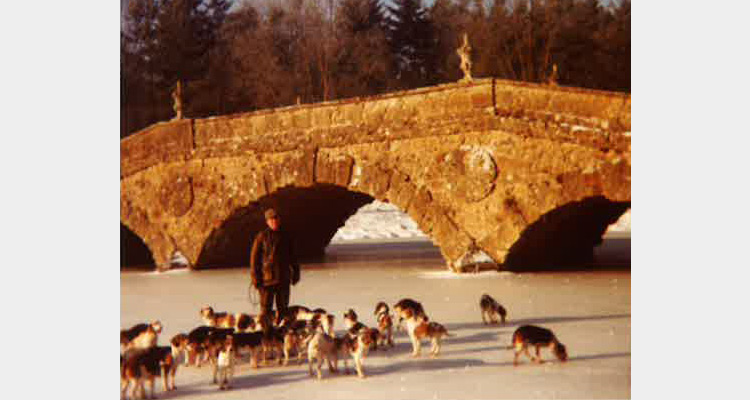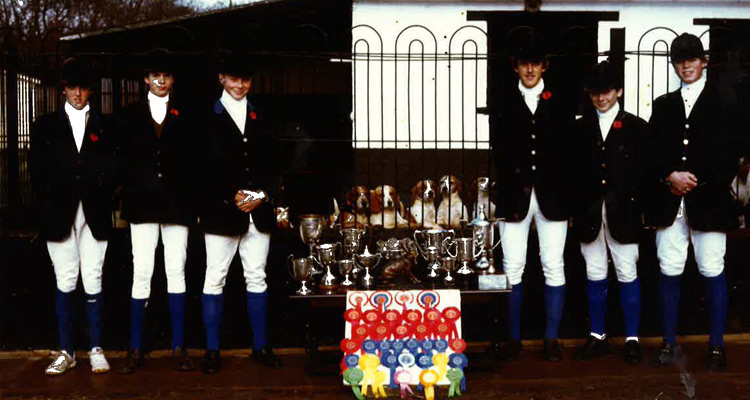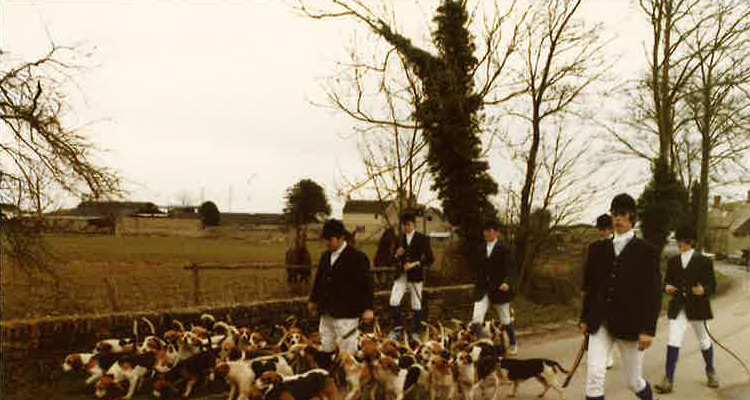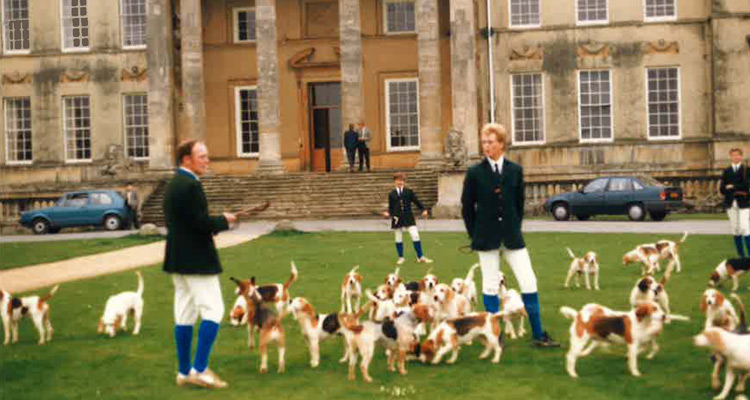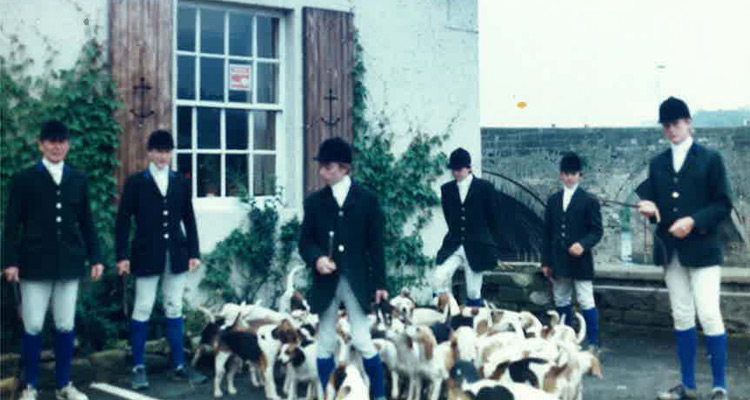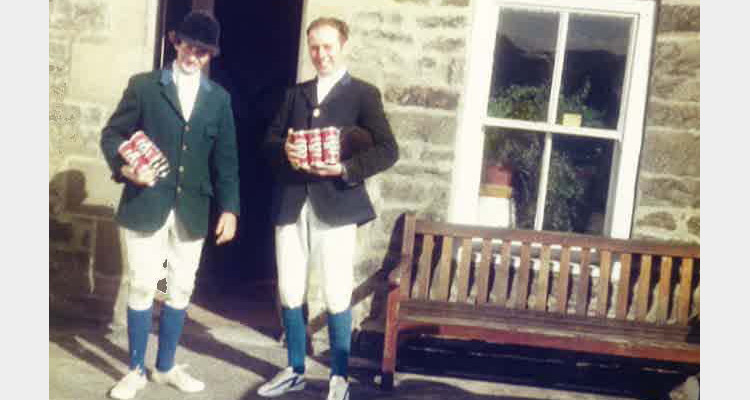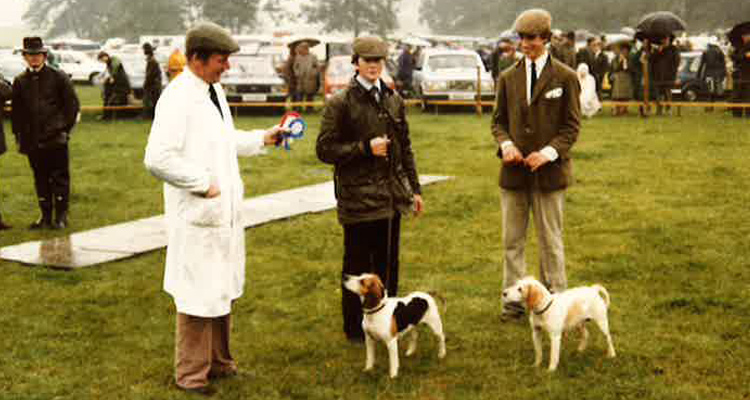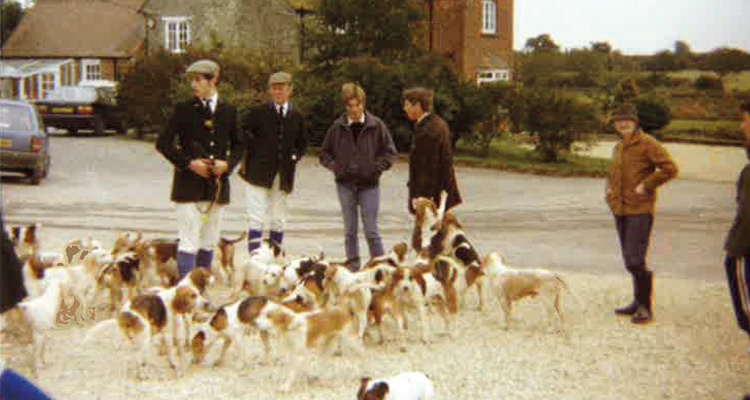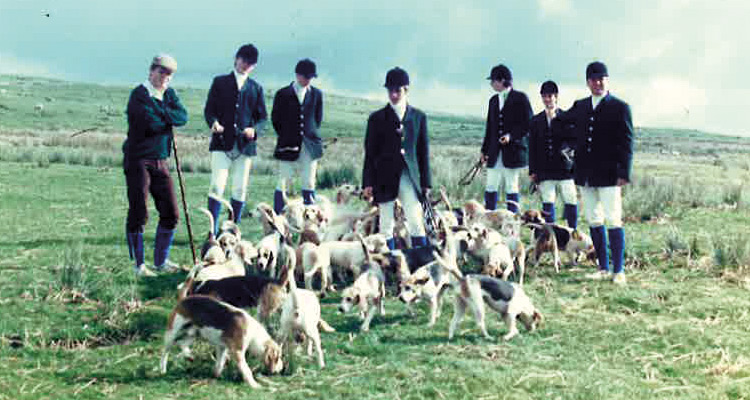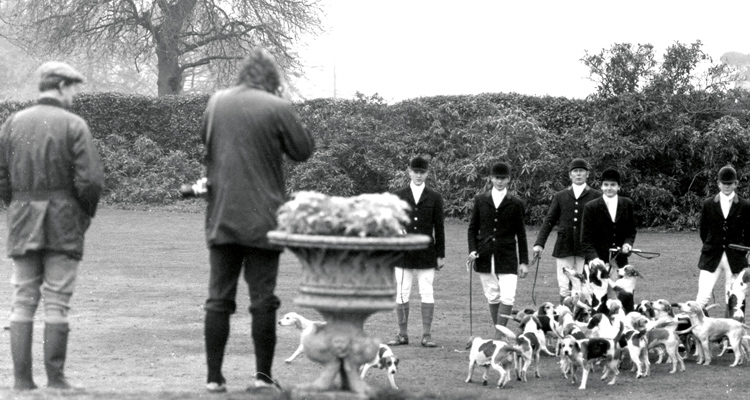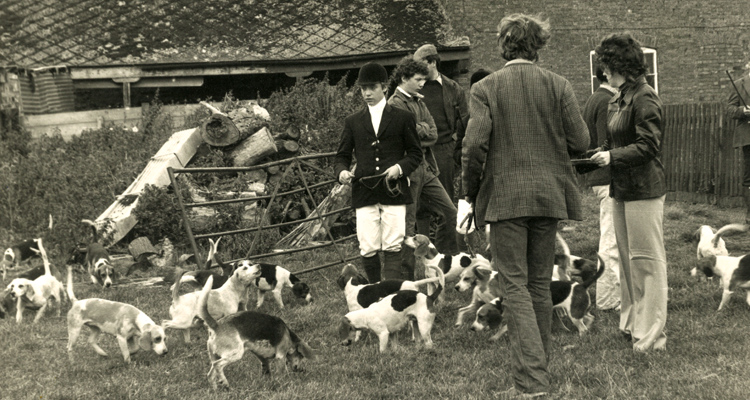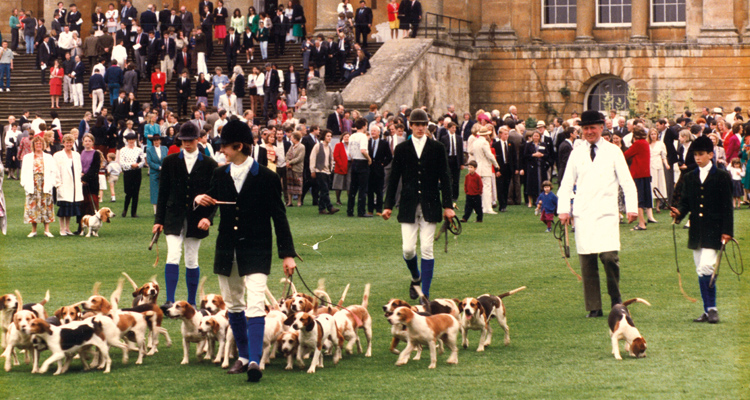John Thornton, known to everyone as Nat, spent over 35 years working at Stowe together with his wife Ann, who worked in the Medical centre caring for sick Stoics. They arrived in 1973 and initially Nat looked after the Beagles and also tended the Headmaster’s garden. They lived in the West Boycott Pavilion. At that time, Robert Drayson was the Headmaster but when he left in 1979, Nat started full time as Kennel Huntsman and improved the pack considerably. Nat is enjoying his retirement and still has very strong links to the Stowe Beagles. Nat and Ann’s daughter, Sue, who works at Stowe, has dug out an impressive collection of photographs of the Stowe Beagles in the 1970s and 1980s, which has inspired this article.
Beagling at Stowe in the early eighties was an especially popular activity and there was fierce competition for the honour of wearing a green coat as a whipper-in or Master and Huntsman. Much of the credit for this must go to the Kennel Huntsman, a former factory worker from Rugby, Nat. He was a brilliant and long-suffering mentor who maintained the highest standards and understood exactly the right balance between allowing us boys leeway and intervening in time to avert disaster both on and off the hunting field. I know Nat’s patience was sorely tested many times. Although we didn’t see him so often, Anthony Pedder also assisted behind the scenes as the member of staff in charge of beagling.
Hunting twice a week across the glorious Buckinghamshire countryside was only possible thanks to the generosity of our farming hosts, and the dedicated support offered by many outsiders. These included a canny old-fashioned countryman we all knew as Bossie, and John Brinklow, a builder who helped Nat keep boisterous boys on the straight and narrow during annual visits to the Northumberland Beagling Festival in early September. During winter and spring terms we travelled to meets every Tuesday and Saturday in a 16-seater van, although it was necessary to lay on a second, additional vehicle for the most popular fixtures. Unsurprisingly, these were usually wherever a lavish (and occasionally alcohol infused) hunting tea awaited at the end of the day. There was no let up during summer, for Nat encouraged us to show the Beagles at major hound shows up and down the country and reasoned that winning classes at Peterborough and other prominent shows generated excellent public relations for the School.
The boys also helped out with kennel duties at the Boycott Pavilions throughout the year, which included hound exercise (is there anywhere more beautiful to walk out a pack of hounds than the magnificent school grounds), feeding, cleaning out lodges and skinning fallen stock to feed the hounds. I was fortunate to hunt the Beagles in the 1980-81 season with Frank Houghton Brown (Temple 83) and the late Tom Bannister (Lyttelton 82) whipping-in, who both went on to make their mark in the wider hunting world. We enjoyed some outstanding hunts and I would relish the opportunity to read once more the detailed observations I made on each day’s sport in the canvas bound Stowe Beagles hunting diary that was handed down for successive generations of huntsmen to complete.
It was entirely thanks to assimilating hound management and hunting skills under Nat’s watchful eye that I was able to take on the mastership of a pack of foxhounds on Dartmoor six years after leaving Stowe, live at the kennels and singlehandedly look after the hounds. I was only one of many, for Stowe has furnished the hunting world with numerous successful masters of foxhounds before and since. These include the Wynnstay’s recently retired MFH, Richard Tyacke and the current master and huntsman of the prestigious Heythrop Hunt in Gloucestershire, Charles Frampton.
I’ve had the privilege of knowing hundreds of different foxhounds since my schooldays, but I will never forget our beloved beagles from nearly forty years ago. The lemon and white Starlight who won everything there was to win on the flags, the equally successful rangy, tricolour bitch Willow, and dear Winifred, a tan bitch with one eye who was a tireless hunter and as honest as the day is long. And then there was Roxburgh, whose photo with a hare’s pad clasped firmly between his teeth hangs in my office to this day – how we adored those wonderful hounds. None stood higher than 16 inches at the shoulder, but they are all giants in my mind’s eye.
Adrian Dangar (Temple 81)

